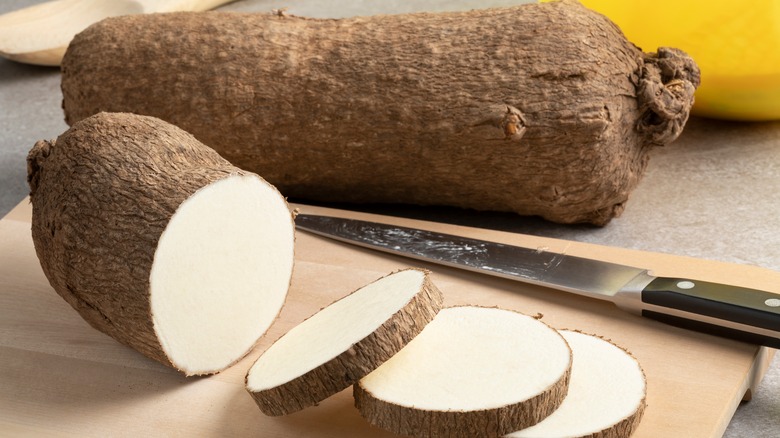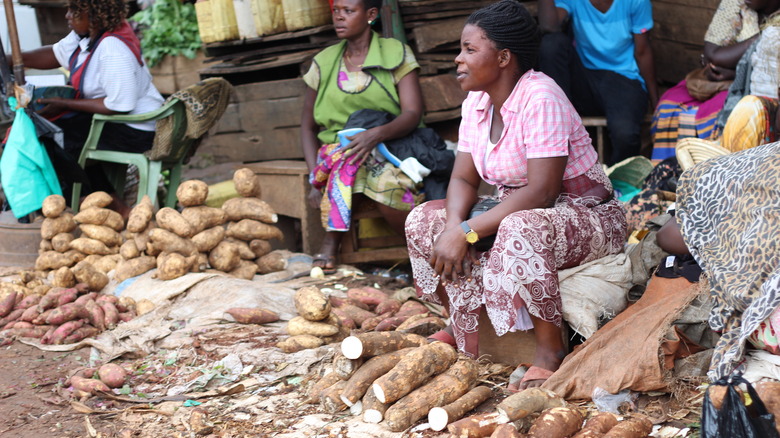Why The African 'Yam Belt' Is Crumbling
Yams may be a blip on the radar of Western food consumers, especially when separated from the often-linked but unrelated sweet potato. But it's a different story on the African continent, where yams can draw shifting nutrition lines for millions of people.
With global food insecurity on the rise, it's no surprise that African countries are feeling the brunt of it. The United Nations reported that one in three people worldwide had insufficient access to food in 2020, equating to 768 million undernourished people. Out of that number, a striking 282 million reside on the African continent. And those numbers predated the 2022 invasion of Ukraine by Russia, which significantly impacted crucial grain and other exports to Africa.
Each region bears its own food-focused challenges, including what's known as the African "yam belt," stretching across the countries of Ghana, Benin, Republic of Côte d'Ivoire, Togo, Nigeria, and Cameroon, according to ScienceAdvances. Yams play a pivotal role in African food security, second only to cassava in West African crop production. The region also supplies around 90% of all yams worldwide, explains Reuters, leading to alarm over the cumulative decline in the quantity and quality of yam crops.
So, what's causing the yam belt in Africa to crumble? The answer is multi-layered, but some familiar refrains ring clear in the growing crisis.
All about soil and climate
Recent food upheavals across the globe hit hard, many of which were caused by recent events such as the COVID-19 pandemic, the disruption of grain supplies from Ukraine, and the ever-increasing effects of climate change. As food-insecure nations draw inward to solve their own food dilemmas, West African subsistence crops such as yams get a fresh — and hard — look. No longer can countries rely on food imports, Westernized diets, and what Sainsbury Laboratory Cambridge University (SLCU) calls "crop homogeneity."
The increasing interest in native food crops leads food scientists to study the decline of tubers, particularly in the African "yam belt." One thing arises as the primary cause of crumbling crop production of yams: The depletion of soil quality and fertility due to a changing climate. Molecular geneticist Dr. Ranjana Bhattacharjee tells Reuters that plants must be redesigned molecularly to fit the changes, making them more resilient, disease resistant, and adaptable.
So why not just grow other crops? That's a good question and it has a very good answer. Yams are appetizing and versatile while also containing high amounts of protein and vitamins compared to the less nutritious cassava plant. It's also drought-resistant, adaptable to changing climates, and actually replenishes the soil, according to SLCU plant scientist Dr. Nadia Radxman.
It's a lot to take on, but as SLCU notes, the payoffs are huge: Food security and resistance against weather changes, soil depletion, and hunger. That's not even counting local empowerment for farming communities through indigenous crops.

